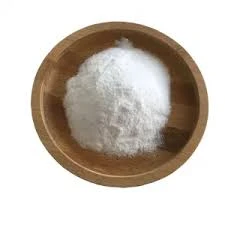Acrylamide in Water Treatment A Comprehensive Overview
Acrylamide is a chemical compound that has garnered significant attention for its role in water treatment processes. Commonly utilized in the production of polymers and in various industrial applications, acrylamide has potential implications in water purification, particularly in the context of coagulation and flocculation. This article aims to explore the significance of acrylamide in water treatment, its benefits, potential risks, and the regulatory framework governing its use.
Understanding Acrylamide
Acrylamide is an organic compound that is soluble in water and has the chemical formula C3H5NO. While it is primarily known for its use in producing polyacrylamide, a substance widely employed in various industrial processes including water treatment, the concerns surrounding its toxicity have prompted rigorous research and scrutiny. Acrylamide can form during cooking processes, particularly at high temperatures in certain starchy foods, but its relevance in water treatment is primarily linked to its polymeric forms.
Acrylamide in Water Treatment
In water treatment, acrylamide polymers are employed to improve the sedimentation and clarification of water. When added to water, these polymers can help aggregate fine particles, bacteria, and other contaminants, facilitating their removal from the water column. This process is crucial in municipal water treatment facilities and industries where clean water is essential.
The ability of acrylamide polymers to enhance turbidity removal makes them invaluable in treating both drinking water and wastewater. They assist in the formation of larger flocs, which can settle more effectively, allowing for a clearer and cleaner effluent. Furthermore, these polymers can assist in the dewatering processes of sludge, reducing the volume of waste that must be managed, which is an important aspect of modern environmental practices.
Benefits of Using Acrylamide
acrylamide water treatment

The application of acrylamide in water treatment comes with several benefits. One key advantage is the cost-effectiveness of using acrylamide-based coagulants compared to traditional methods. They often require lower dosages and can achieve better clarification results, translating to operational savings for water treatment facilities.
Additionally, acrylamide polymers possess versatility in their applications. They can be tailored to suit specific treatment processes, making them suitable for various water quality conditions and treatment requirements. Their adaptability allows for effective use in different settings, from municipal water systems to industrial wastewater treatment.
Potential Risks and Regulation
Despite its benefits, the use of acrylamide in water treatment is not without risks. Acrylamide is classified as a probable human carcinogen, and concerns about exposure to this compound have led to increased scrutiny. The polymer form typically used in treatment processes is considered less harmful than the monomer, yet the risk of residual acrylamide in treated water remains a point of concern.
To address these risks, regulatory bodies such as the Environmental Protection Agency (EPA) in the United States have established guidelines and limits for acrylamide use in drinking water treatment. These regulations aim to protect public health while allowing the continued use of acrylamide-based technologies that enhance water treatment efficiency.
Conclusion
Acrylamide plays a significant role in water treatment processes, especially in improving the effectiveness of sedimentation and clarification. While it offers numerous benefits in terms of cost and versatility, the potential health risks associated with its use cannot be overlooked. Ongoing research and regulatory measures are crucial to ensure the safe application of acrylamide in water treatment while safeguarding public health. As water treatment technology continues to evolve, balancing efficacy and safety will remain an essential consideration for industry professionals and regulators alike.

